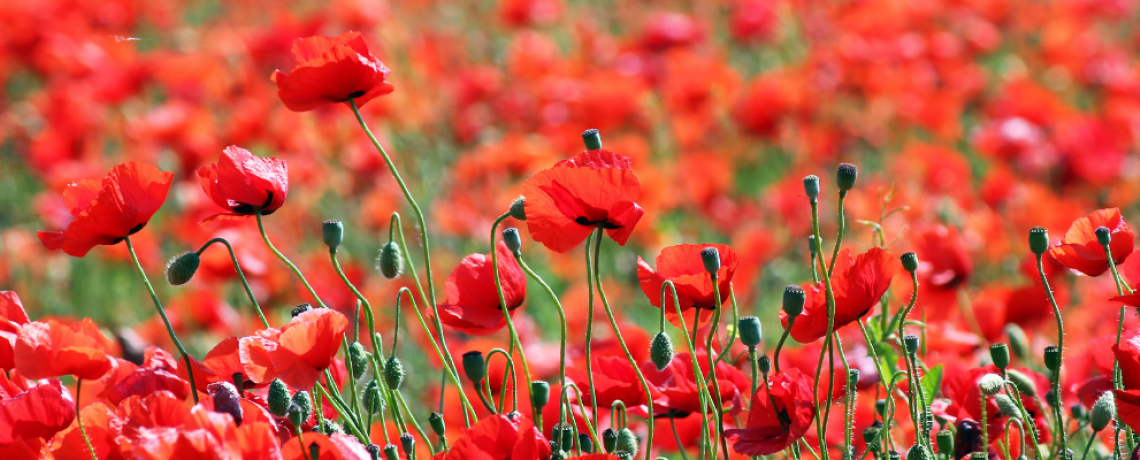Remembrance Day

At 5am on 11 November 1918, three German government representatives accepted the Armistice terms presented to them by an allied commander, General Ferdinand Foch of the French Army. The Armistice became effective at 11am the same day and the 4-year long First World War ended.
After World War II the Australian Government agreed to the United Kingdom's proposal that Armistice Day be renamed Remembrance Day to commemorate those who were killed in both World Wars.
In October 1997 the then Governor-General issued a Proclamation declaring 11 November as Remembrance Day - a day to remember the sacrifice of those who have died for Australia in wars and conflicts.
Official NSW Remembrance Day service
All members of the public are invited and encouraged to attend the NSW Remembrance Day service at the Cenotaph in Sydney's Martin Place. The ceremony will commence at 10.30am on Monday, 11 November 2024.
To find out more, including getting to the service using public transport, visit the NSW Government website.
Former NSW Centenary of Anzac Ambassador and radio broadcaster Gareth McCray OAM has written and produced a mini special to commemorate Remembrance Day. Listen below.
NSW Remembrance Services
Public commemorations are a vital way to continue the spirit of Remembrance Day each year and honour the memory of the men and women who have served and are currently serving.
11am on 11 November is a time for us to stop and remember. A number of bell towers across the state will ring their bells at 11am and we can all observe one minute of silence to remember the service and sacrifice of our veterans.
Readings, poems and protocols for holding a Remembrance Day commemoration are available on this website - plan and deliver a commemoration - as is a recording of the Ode of Remembrance, the Last Post, a minute's silence and the Rouse. You can download the recording by clicking on the 3 dots on the right side of the media player.
the Ode, the Last Post, a minute's silence and the Rouse
The red poppy
The Flanders poppy was immortalised by Lieutenant-Colonel John McRae's poem In Flanders Fields (1915), and became the enduring symbol of the war for veterans and remembered as the only flower to bloom in the shattered landscape of no man's land. The artillery shells and shrapnel stirred up the earth in France and Belgium and exposed the seeds to the light they needed to germinate. According to folklore they were red from the blood of fallen soldiers.
McRae served as a medical officer with the first Canadian Contingent in France during the First World War. When in charge of a small first-aid post at the second battle if Ypres in 1915, he wrote the now very famous poem
In Flanders’ fields the poppies blow
Between the crosses, row on row
That mark our place, and in the sky
The larks still bravely singing, fly
Scarce heard amid the guns below.
We are the dead, short days ago
We lived, felt dawn, saw sunset glow.
Loved, and were loved, and now we lie
In Flanders’ fields.
Take up our quarrel with the foe,
To you from failing hands we throw
The Torch: be yours to hold it high!
If ye break faith with us who die
We shall not sleep, though poppies grow
In Flanders’ fields.
The verses were apparently sent anonymously to the English magazine, Punch, which published them under the title, In Flanders’ Fields. Colonel McCrae died while on active duty in May 1918.
The poppy soon became widely accepted throughout the allied nations as the flower of remembrance to be worn on Armistice Day.
The Anzac Memorial's shop has a range of poppy memorabilia to commemorate Remembrance Day. To shop the range, visit the Memorial's shop in-person or online: https://anzacmemorialshop.bigcartel.com/. All sale proceeds help fund new interpretive and education programs, heritage conservation and management of the Memorial’s Collection.
Red poppies will be projected onto the sails of the Sydney Opera House at dawn and on the evening of 11 November.
Image (c) Salty Dingo
Schools' resource pack
The NSW Office for Veterans Affairs has also developed a schools' resource pack with information on the history and importance Remembrance Day and Kokoda Day. Download resource pack.
Commemorate on social media
A simple way to acknowledge the service and sacrifice of our veterans and current serving personnel is to post to your social media accounts, whether that be Facebook, Instagram, LinkedIn or Twitter.
Below is a social media tile you can use, and remember to include the hashtags:
#RemembranceDay2024 #LestWeForget #WeWillRememberThem


Image (c) AWM H11563

Image (c) NSW Government